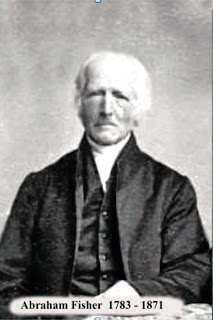Story by' Padraig 'Paud' O Cuirrin, photos (c) Eddie Cantwell and others.
 |
| Nioclás Ó Griofáin(left) chats with Paud. |
Airgead Poca
By, Padraig O Cuirrin
Few people nowadays, and more especially the
younger generation, can appreciate how difficult it was to get one's hand on a
bit of pocket money in the '50s and '60s. Some would argue that it was hard to
acquire cash at all – pocket money or otherwise – at that time!
Growing up in a rural area like An Rinn
meant that the agricultural sector offered the best prospects for earning a few
bob. Farming then was largely non-mechanised and thus was extremely
labour-intensive – and none more so than the cultivation of the sugar-beet
crop. As it was a guaranteed cash crop many small farmers locally might have an
acre of beet and for some, like Eddie Crotty, it was their main tillage crop.
Labour-intensive it certainly was and, in an
Ireland stripped of manpower due to emigration, part-time work opportunities
opened up for school-boys like myself at various stages of the sugar-beet
cropping cycle. In early summer the newly emerged beet plants had to be thinned
(and weeded), while in the late autumn the harvesting process got underway.
Perhaps we did not reflect too deeply on it
at the time but thinning beet was hard and monotonous work. It meant being on
one's knees from early morning, straddling the beet drills with sacking tied
around the knees for protection. If the weather was too dry the hands would be
torn off you trying to pull out the surplus plants and the weeds which sprung
up with the beet ; when it rained the pulling and dragging was easier but then
one had the discomfort of crawling through mud - with perhaps a good soaking
added in for good measure! There wasn't much scope for negotiating on pay and
the going rate was usually a shilling a drill. How much one earned depended on
factors such as the length of the drills, and whether the farmer had “scuffled”
the furrows between the drills (which reduced the amount of weed to be dealt
with). Overall, the minimum expectation was around ten drills thinned for ten
shillings a day, with the possibility of earning up to a pound under optimum
conditions.
 |
| Early view of Ballinagoul, Ring |
While the money was indeed hard-earned it
did enable one to make a contribution to the hard-pressed family budget and
still have some discretionary funds available to pay for a trip to the cinema
or maybe even buy an item of clothing. The downside, of course, is that the
thinning season was of short duration and other work had to be found.
Around October the matured sugar-beet was
ready for harvesting. This involved a number of men or Ringboys each walking
between two drills, pulling a beet plant with each hand and banging them
together to remove the excess clay from the roots. Once the beet was all pulled
the process of “crowning” began. A special machete-like cleaver was used
for this. The beet had to be cleaned of all leaves and thrown in a pile for
transporting. A horse and cart would be used to draw the beet from the field to
the nearest road where it was heaped until a lorry arrived to take it to the
train station in Dungarvan for conveying to Thurles or Mallow beet factories to
be processed into sugar. Richie Walsh was usually the haulier who undertook
this locally. Getting the beet off the road and into the lorry was tough work
indeed. Like the cleaver used for “crowning” a special sprong with balls
of metal on the tip of each prong to avoid sticking the beet was developed for
this loading work. I well remember cycling over to Eddie Crotty's after school
or on Saturdays to participate in this seemingly never-ending work of getting
the beet on its way to the factory. Given the time of year it was inevitably
undertaken in cold and wet conditions.
 |
| Group from Ring on a trip to Youghal (Waterford County Museum) |
For all of the hard work involved with beet
one would not wish to give the impression that it was unrelenting misery. The
process usually involved a number of people at all stages and there was room
for some fun and a sense of camaraderie developed – and even a bit of
competition sometimes as to who would get the most drills thinned! I suppose
our expectations were low and we were just happy to have the opportunity to
earn anything at the time.
Seán & Barbabra Regan pictured with Paud...a few weeks ago!!!
I don't think that anyone made a fortune
from sugar-beet production, mainly because of all the labour and other inputs
required, but it did provide a modest cheque for many small farmers in the run
up to Christmas. For some more of us it put a few shillings in our pockets at a
time when money was a scarce commodity indeed.






No comments:
Post a Comment